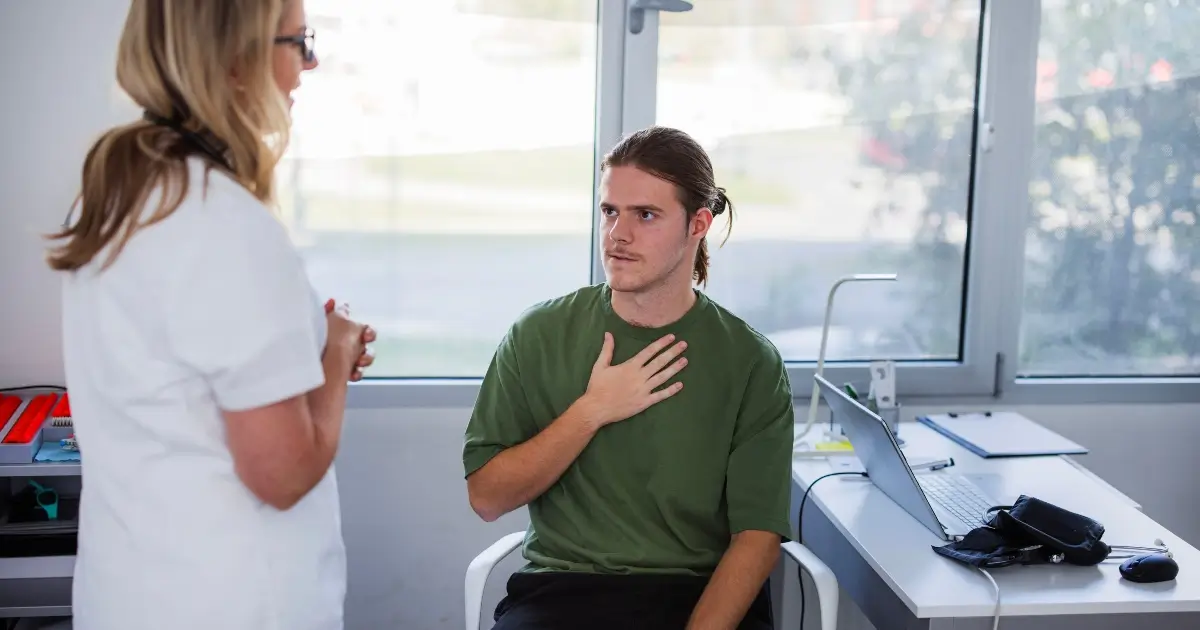Seatbelt syndrome refers to a specific injuries caused by wearing restraints during a violent collision. While seatbelt use saves thousands of lives each year, they can sometimes serious harm when worn improperly or during an especially severe crash.
At PKSD, our experienced Milwaukee car accident attorneys advocate for injured victims every day, something we have been doing for decades. Our legal team understands the complex nature of crashes that cause severe seatbelt injuries, and we know how to fight back against insurance companies that try to minimize or deny these serious internal injuries.
Need legal help after a car crash? Contact our trusted law firm today to discuss your situation and find out if you may have a case.
Call: 414-333-3333 today for a free initial consultation

What Is Seatbelt Syndrome?
Seatbelt syndrome occurs when a restraint system intended to protect you causes trauma due to the extreme forces during a collision. The following factors contribute to these distinctive injuries:
- Rapid deceleration forcing your body against the restraint
- Improper belt positioning across the abdomen instead of the pelvis
- The concentration of crash forces on the areas where the belt contacts your body
- Vehicle intrusion that changes your seating position during impact
- Preexisting medical conditions that make tissues more vulnerable to trauma
- The angle of impact causing your body to move in ways the belt cannot fully control
- Age-related factors, as children and elderly individuals have more fragile skin tissue
What Are the Warning Signs of Seatbelt Syndrome?
After a car crash, it is vital that you seek medical attention right away. Internal injuries are often invisible immediately, and you may not even feel pain due to the adrenaline and shock from the trauma of the crash. Medical professionals recognize the early warning symptoms of these injuries, which may include:
- Visible bruising or abrasions across the chest, abdomen or shoulder where the restraints made contact
- Persistent abdominal pain or tenderness, especially when touching the area
- Difficulty breathing or pain when taking deep breaths
- Blood in urine, indicating possible kidney trauma
- Unexplained fever, which may signal internal infection
- Nausea or vomiting without other explanation
- Dizziness or lightheadedness that persists after the accident
- Neck or shoulder pain beyond typical whiplash symptoms
- Changes in bowel movements or digestive function
How Soon Should I See a Doctor After a Car Accident?
The best way to protect your help after a car crash is to seek medical attention right away. Time is often critical, even if you feel fine initially. Seatbelt syndrome injuries often develop symptoms gradually and internal bleeding or organ damage are not visible and may not even initially cause immediate pain despite the need for urgent medical intervention.
Waiting to seek medical care not only endangers your health, but it also complicates your legal case as it leaves a time gap between when the crash occurred and when you sought treatment. Insurance companies frequently use these gaps to dispute your claim, arguing that your injuries could have happened elsewhere.
When discussing your injuries with the treating doctors at the ER, be sure to let them know you were in a car crash. Be sure to describe any bruising or marks on your body, as these details help to alert them to the possibility of internal injuries, including seatbelt syndrome, that might otherwise go undetected.
What Is the Recovery Process for Seatbelt Syndrome?
Recovery varies depending on the extent and severity of your injuries and whether you need surgery. After treatement, some patients may only require a combination of rest and medication for pain management.
Severe cases involving internal organ damage or spinal injuries, however, may require surgical intervention followed by comprehensive rehabilitation plans supervised by specialists.
To ensure an optimal recovery, you should be sure to attend all follow-up appointments, including any physical therapy that may have been prescribed. For your legal case, it is also critical that you document your recovery progress thoroughly. Complications can emerge throughout the recovery process, even after initial improvement. Some crash victims with seatbelt injuries may need additional medical care – or an adjustment to their current treatment plan.
How Can I Wear My Seatbelt to Prevent Injury?
Proper seatbelt positioning significantly reduces your risk of developing a restraint injury while still providing life-saving protection during a collision. Follow these guidelines to minimize your risk of restraint-related injuries:
- Position the lap belt low across your hips and pelvis; your seat belt should never be placed over your abdomen
- Place the shoulder belt across your chest and collarbone. Do not place it behind your neck
- Ensure the belt lies flat without any twists or folds
- Remove any slack by pulling the belt snug after buckling
- Adjust your seat position to maintain proper belt alignment
- Use manufacturer-approved seats and restraints for children too small for standard belts
- Replace worn or damaged seatbelts immediately
- Check that retractors lock properly during sudden movements
- Avoid placing cushions or comfort devices between your body and the seatbelt
- Consider vehicle models with adjustable anchor points if standard positions do not fit your body type
What Are the Long-Term Health Effects of Seatbelt Syndrome?
Seatbelt syndrome can lead to lasting health complications that persist long after the initial trauma has healed. These effects may require ongoing medical attention and can significantly impact quality of life.
- Chronic abdominal pain due to intestinal scarring or adhesions
- Persistent spinal issues, including chronic back pain and limited mobility
- Long-term digestive problems from internal organ damage
- Post-traumatic stress disorder and anxiety when traveling in vehicles
- Increased risk of bowel obstruction requiring future surgeries
- Chronic pain at the site of spinal fractures or vertebral compression
- Nerve damage resulting in numbness, weakness or chronic pain
- Reduced abdominal muscle strength affecting core stability
- Increased vulnerability to future abdominal injuries
Why Is Proper Medical Documentation Critical for Seatbelt Syndrome Cases?
Medical documentation provides evidence of internal injuries, like seatbelt syndrome, because it establishes a direct link between your injuries and the crash that caused them. Diagnostic imaging and laboratory results provide further objective evidence of the internal damage you sustained. This information helps doctors to determine your treatment needs more quickly, which can greatly impact your recovery.
From a legal standpoint, your medical records provide critical details that helps determine the overall value of your claim. This hard-to-dispute evidence also strengthens your legal position during settlement negotiations.
Wisconsin Legal Rights and Compensation for Seatbelt Syndrome Victims
State law protects car accident victims suffering from restraint injuries, allowing you to pursue compensation beyond what insurance companies initially offer. Your legal rights include:
- The right to seek compensation regardless of whether another driver was entirely at fault, under Wisconsin’s modified comparative negligence law
- Ability to claim damages even with preexisting conditions if the accident worsened them
- Entitlement to economic damages including all medical expenses, rehabilitation costs and lost wages
- Right to non-economic damages for pain, suffering and diminished quality of life
- Potential punitive damages in cases involving grossly negligent defendants
- A statute of limitations of two years for personal injury claims
- Right to fair compensation for future medical needs related to your injuries
- Protection against insurance companies using Wisconsin’s seatbelt defense inappropriately
- Eligibility for compensation even when delayed injuries develop days after the accident
- Right to legal representation without upfront payment through contingency fee arrangements
Suffering With a Seatbelt Injury? Contact PKSD for Legal Help
Do you have seatbelt syndrome or other injuries after a car crash in Milwaukee? Be sure to seek legal help as soon as your injuries have been stabilized to protect your legal rights and best interests.
At PKSD, our Milwaukee law firm has recovered millions for our clients in Wisconsin. We understand the complex medical evidence needed to prove these cases and are preapred to fight relentlessly for the full and fair compensation you deserve.
Call our office today to request a free consultation. You can also complete our simple online form to request one of our highly qualified attorneys review your case within 24 hours.
Trusted. Experienced. Lawyers. Call PKSD today: 414-333-3333





